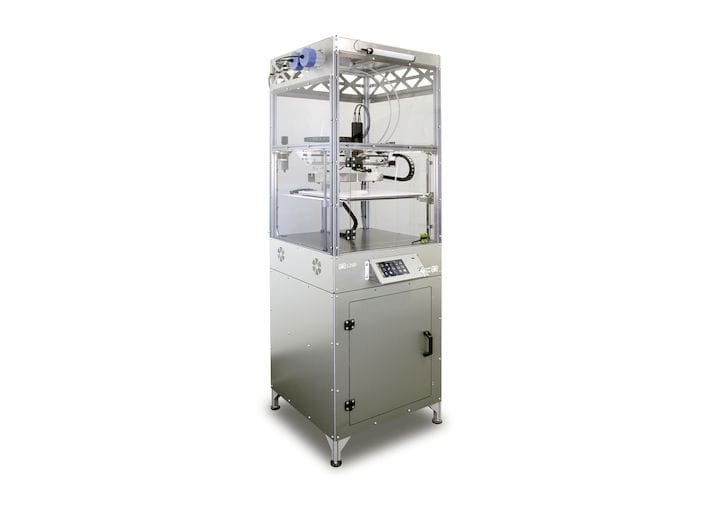![The L280 Silicone 3D Printer [Source: German RepRap]](https://fabbaloo.com/wp-content/uploads/2020/05/image-asset_img_5eb0a362aa745.jpg)
German RepRap announced the availability of their silicone 3D printer, the L280.
We’ve been following the development of this highly interesting device for several years, first seeing it as an experimental prototype in California at a SOLIDWORKS World event. At that time it was unclear whether the device would be desired, but that question was quickly cleared up.
![Prototype of the German RepRap LAM process [Source: Fabbaloo]](https://fabbaloo.com/wp-content/uploads/2020/05/image-asset_img_5eb0a3631116d.jpg)
The company collected significant interest in the product after their first showing – even though it was not an actual product. There was so much interest they decided to transform the experiment into a true product shortly thereafter.
But it was still more of a beta release than an actual production product. Now that’s changed as the company has announced the L280, a “production 3D printer”.
The L280 uses what German RepRap calls the LAM process, or Liquid Additive Manufacturing. Essentially two liquid materials are mixed at print time, and they react with each other to solidify into a solid – but highly flexible – silicone object. Their process also includes a special halogen lamp that somehow excites the molecules to assist the chemical reaction.
![Finely detailed silicone objects are possible with the German RepRap L280 3D printer [Source: Fabbaloo]](https://fabbaloo.com/wp-content/uploads/2020/05/image-asset_img_5eb0a3634c1c2.jpg)
The material used in the L280 is from Dow Chemical, “EVOLV3D LC 3335 Liquid Silicone Rubber”. It is likely that other materials are not really feasible in the L280, so you have only one option. However, that is likely sufficient for buyers, as this is a highly specialized machine that is solely for producing silicone objects.
Let’s take a look at the L280’s specifications:
-
Build volume of 280 x 280 x 200 mm, surely large enough to accommodate any conceivable silicone object, and I can’t imagine one being 200mm tall
-
Print speed of between 10 and 150 mm/second, although I suspect for most prints the effective speed will be on the low part of that range
-
Rather coarse layer sizes ranging between 0.220 and 0.900 mm, which is not unexpected considering the material type
-
Swappabe nozzles of size 0.23mm for fine detail, 0.4mm for standard operation, and 0.8mm for larger, coarser prints
-
The print bed is heated to 110C, which must be required for the LAM process
-
Simplify3D software bundled with the machine to provide for print job preparation
But what makes the L280 a “production” 3D printer? German RepRap seems to have added a few features in that regard:
-
Large capacity “pails” of LSR material for longer job runs
-
Availability of maintenance contracts
-
Multiple networking methods to allow for group use or limited remote management
-
Quality control system that will automatically stop jobs if “irregularities” are detected
That list of features likely qualifies the L280 as a production 3D printer.
Now we shall see whether it is used as such. Based on evidence of prior demand, it is likely to have good sales. What I am wondering about is how the ability to 3D print silicone objects in production mode will generate new applications.
Current silicone object manufacturing techniques have limitations, much like plastic or metal manufacturing had before the discovery that 3D printing allowed the creation of previously impossible objects.
What silicone applications will we see?
Via German RepRap










